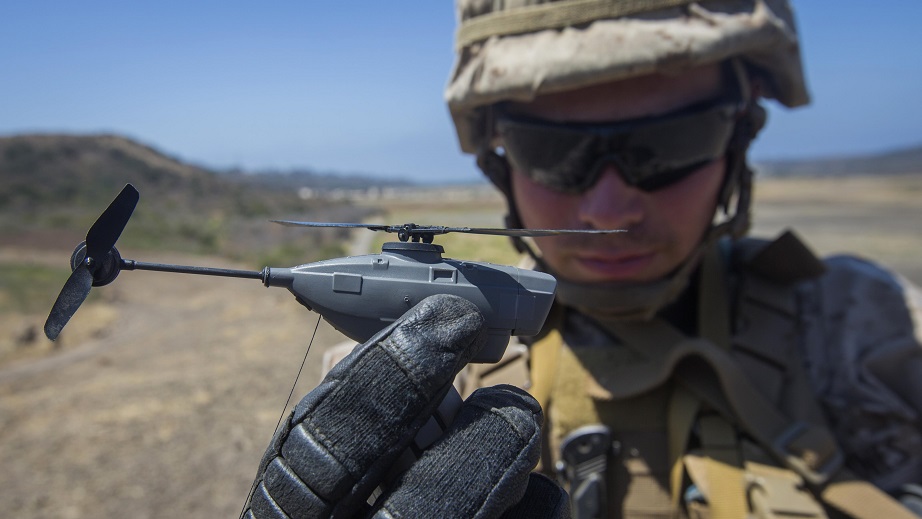This post is also available in:
 עברית (Hebrew)
עברית (Hebrew)
There is a major global shift toward smaller, cheaper unmanned platforms that can operate in network with one another. It’s part of a wider move toward automation and unmanned systems by war planners in the U.S. and elsewhere, including Israel and Russia.
Under a DARPA project aimed at creating new tactical tools for small infantry units, Raytheon and other defense contractors and research institutions are developing technology to control swarms of small aerial drones.
War planners view weapons and surveillance platforms that operate as swarms as advantageous in tactical situations in part because they’re difficult to defend against.
They’re also cheaper than so so-called “exquisitely manned systems,” such as jet fighters and tanks. If you envision a swarm as a cluster of relatively inexpensive distributed sensor platforms, it’s easy to see the economic benefits in cases where some loss is likely to occur.
But those benefits could have severe consequences for when and how wars are fought, potentially increasing the likelihood of armed engagement, zdnet.com evaluates.
The U.S. Army recently conducted range tests of autonomous ground vehicles with unmanned weapons systems aboard. Raytheon has been working on drone swarms for some time. In 2015, the defense contractor participated in the Office of Naval Research’s LOCUST program, successfully networking 30 UAVs in a swarm.
The current DARPA project, which is called the OFFensive Swarm-Enabled Tactics (OFFSET) program, “envisions future small-unit infantry forces using swarms comprising upwards of 250 small unmanned aircraft systems (UASs) and/or small unmanned ground systems (UGSs) to accomplish diverse missions in complex urban environments.”
Raytheon is developing a “drag and drop” interface to control networked drones, as well as a virtual simulator to test its communications technology.
“Operators use speech or gestures to control the swarm,” explains Shane Clark, a principal investigator on the program. “This is a tremendous advantage during operations. The system provides sensor feeds and mission status indicators for complete situational awareness.”


























